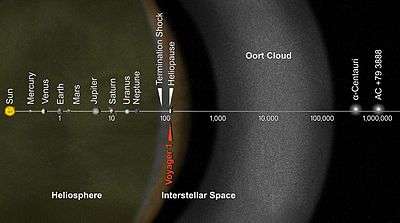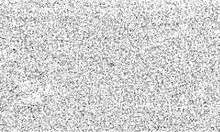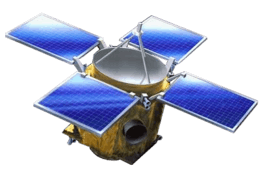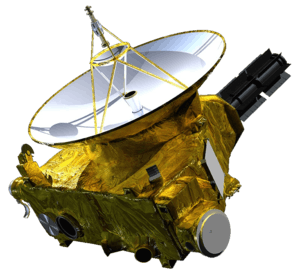Whipple (spacecraft)



Whipple mission is a proposal for a space observatory in the NASA Discovery Program 2014 announcement of opportunity.[1] The observatory would try to search for objects in the Kuiper belt and the theorized Oort cloud by doing a blind occultation observation.[2] Although the Oort cloud was hypothized in the 1950s, it has not actually been directly observed.[2] The mission overcomes the hurdle of looking by looking for brief moments where the objects would block the light of background stars, rather than would light that exceeds the abilities of current telescopes.[2]
The Kuiper belt was also once only predicted, but since 1992 over 10,000 objects have been found in that region of space.[3] One source of confusion though is that objects like Sedna are not predicted in a model using existing Solar System bodies.[3] (see also Planet Nine)
Description
Whipple would orbit in a halo orbit around the Earth–Sun L2 and have a photometer that would try to detect Oort cloud and Kuiper belt objects (KBOs) by recording their transits of distant stars.[1] It would be designed to detect objects out to 10,000 AU.[1] Some of the mission goals included directly detecting the Oort cloud for the first time and determining the outer limit of the Kuiper belt.[1] Whipple would be designed to detect objects as small as a kilometer (half a mile) across at a distance of 3,200 billion kilometers; 22,000 astronomical units (2×1012 mi).[4] Its telescope would need a relatively wide field of view and fast recording cadence to capture transits that may last only seconds.[5]
In 2011, Whipple was one of three proposals to win a technology development award in a Discovery Program selection.[4] The design proposed was a catadioptric Cassegrain telescope with a 77-centimeter aperture (30.3 inches).[6] It would have a wide field of view with a fast read-out CMOS detector to achieve the desired time and photometric sensitivity.[3]
The smallest KBO yet detected was discovered in 2009 by poring over data from the Hubble Space Telescope's fine guidance sensors.[7] They detected a transit of an object against a distant star, which, based on the duration and amount of dimming, was calculated to be a KBO about 1,000 meters (3,200 ft) in diameter.[7] It has been suggested that the Kepler observatory may be able to detect objects in the Oort cloud by their occultation of background stars.[8]
See also
- Fred Lawrence Whipple Observatory
- List of Solar System objects most distant from the Sun in 2015
- List of space observatories
- Near-Earth Object Camera, a proposed space telescope
- New Horizons, Pluto and KBO flyby probe
- Whipple shield, a type of spacecraft shielding
References
- 1 2 3 4 5 The Whipple Mission Exploring the Oort cloud and the Kuiper Belt - C Alcock et al. Archived 2015-11-17 at the Wayback Machine.
- 1 2 3 Alcock, C.; Brown, M. E.; Gauron, T.; Heneghan, C.; Holman, M. J.; Kenter, A.; Kraft, R.; Lee, R.; Livingston, J. (2014-12-01). "The Whipple Mission: Exploring the Kuiper Belt and the Oort Cloud". AGU Fall Meeting Abstracts. 51: P51D–3977. Bibcode:2014AGUFM.P51D3977A.
- 1 2 3
- 1 2 NASA Selects 'Whipple' Mission for Technology Development
- ↑ A Fast, Wide Field of View, Catadioptric Telescope for Whipple
- ↑ Group, CfA Web Services. "High Energy Astrophysics". whipple.cfa.harvard.edu. Retrieved 2018-01-27.
- 1 2 "HubbleSite: News - Hubble Finds Smallest Kuiper Belt Object Ever Seen". hubblesite.org. Retrieved 2018-01-27.
- ↑ Ofek, Eran O; Nakar, Ehud (2010). "Detectability of Oort Cloud Objects Using Kepler". The Astrophysical Journal. 711 (1): L7. arXiv:0912.0948. Bibcode:2010ApJ...711L...7O. doi:10.1088/2041-8205/711/1/L7.

